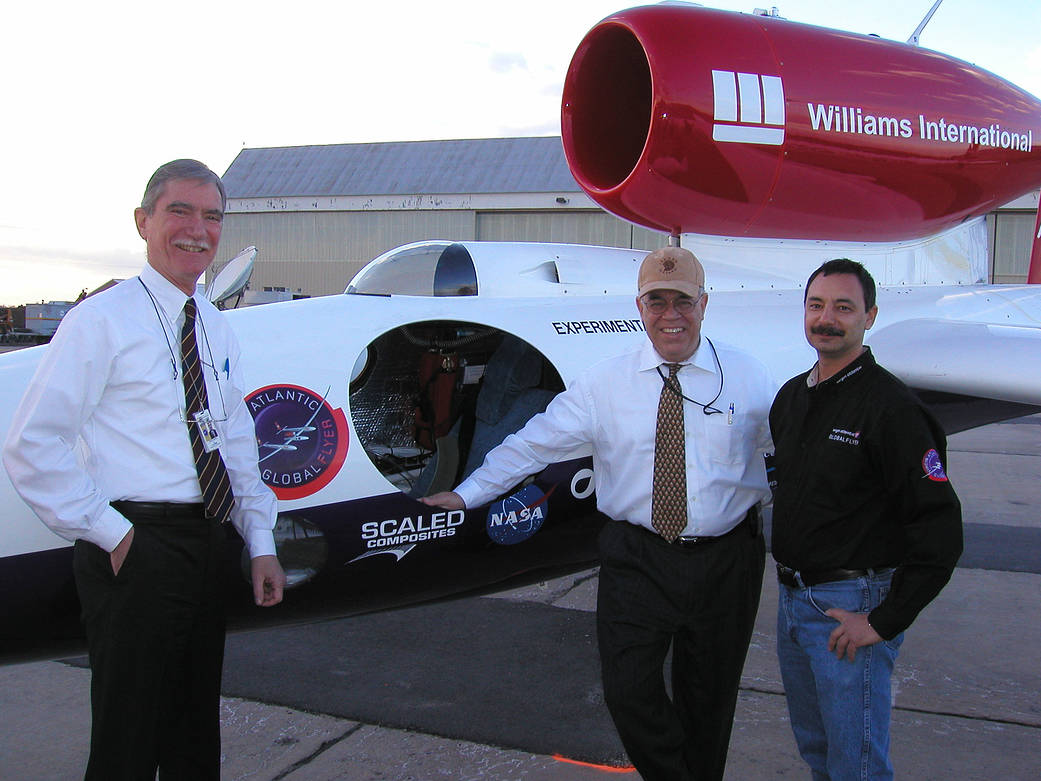NASA Acting Administrator Fred Gregory, center, got a close up look at the Virgin Atlantic GlobalFlyer after its landing in Salina, Kansas, on March 3, 2005. Mr. Gregory is flanked by NASA’s Associate Administrator for Aeronautics Vic Lebacqz, left, and GlobalFlyer Crew Chief Philip Grassa, right.
Pilot Steve Fossett and the experimental plane made history by safely completing the first solo, non-stop, non-refueled around-the-world airplane trip – with help from some NASA technology.
The flight tested NASA’s advanced experimental Tracking and Data Relay Satellite System (TDRSS) transceiver called the Low Power Transceiver (LPT). As a side benefit, the NASA device allowed GlobalFlyer’s mission control to communicate with Fossett for almost three days of flight through a live video connection.
NASA also loaned GlobalFlyer its Personal Cabin Pressure Monitor, which alerts a pilot of potentially dangerous or deteriorating cabin pressure. Because Fossett’s cockpit was too loud for an alarm, the device was modified to vibrate to signal a problem.
Bill Readdy, NASA’s Associate Administrator for Space Operations, also applauded the flight, saying the Agency is “committed to increasing its engagement with entrepreneurs and industry alike in pursuit of the Vision for Space Exploration.”Image Credit: Ken Peppard/FAA
1 min read




























